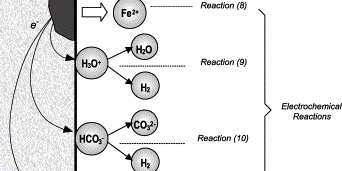What is the Rich/Lean Amine Loading and what is the appropriate value for them?
Amine loading is calculated as the mole ratio of acid gas to the solvent. Rich amine loading (RAL) is referred to the acid gas absorber bottoms liquid which is rich in acid gas and similarly Lean amine loading (LAL) is referred to the bottom of the striping column which is lean in acid gas.
Usually, the amine loading measurement is very difficult in the field or in a lab, so plant simulations are used to determine the RAL and adjust the amine circulation rates and concentrations to meet desired results. Generally, RAL is kept under the value of 0.40; due to several detrimental effects, especially in an all CO2 acid gas system. These effects may include higher corrosion rates, higher temperature bulges within the Contactor and lower recovery of the acid gases, due to slower reaction kinetics and capacity.
Generally, the measurement of Lean Amine Loading (LAL) is relatively easy and reliable, though simulation results can still be used to check the collected data. LAL values will vary with type of amine being used. For MEA, which is one of the most corrosive amines, a LAL of up to 0.15 may be seen, while in an MDEA system (one of the weakest and least corrosive amines) a LAL of 0.005 is not uncommon. Lean Amine Loading will be affected by the reboiler duty, reflux ratio and the number of fractionation stages within the Amine Still. If the lean amine is not properly maintained then corrosion may be encountered in the hot portions of the plant, specifically the Amine Still Reboiler and associated piping.
Therefore, when designing and operating an amine plant, care should be given to making sure the system is large enough to avoid overloading the amine with acid gases (high RAL) and ensuring that the amine regenerator has sufficient capabilities to properly strip the acid gases from the amine (low LAL).

Comments
Post a Comment